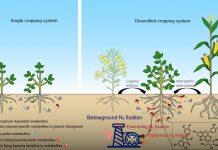Yao SH Zhang B Hu F. Soil biophysical controls over rice straw decomposition and sequestration in soil: The effects of drying intensity and frequency of drying and wetting cycles. Soil Biology & Biochemistry 2011 43(3): 590-599. (IF 3.242 农林科学,一区)
Abstract
Although it is well known that fluctuations in soil moisture affect the decomposition of organic matter few studies have provided direct evidence of the underlying biophysical mechanisms. Cycles of wetting and drying (W-D) may not only alter soil pore structure but also stimulate a proliferation of fungi since these organisms are typically less affected by drought stress than bacteria and hence the development of fungal-induced soil water repellency. The biophysical interaction between these processes is likely to influence the decomposition of organic matter amendments to soil and carbon sequestration. By using soil cores amended with rice straw the objectives of this study were to determine the effects of drying intensity and frequency of W-D cycles on decomposition rate after rewetting soil pore-size distribution soil microbial biomass (SMB) and soil water repellency and to assess their biophysical interaction. One W-D cycle consisted of wetting a soil core from the bottom for 1.5-days at -0.03 kPa followed by 1.5 3.5 or 6.5 days of drying in open air at 25 +– 2.5 degrees C. This resulted in different intensities of drying and frequencies of W-D cycles over a 120-d incubation period. The decomposition rate decreased with repeated W-D cycles and increasing drying intensity particularly between the 3rd and 9th W-D cycles. The SMB-C concentration and soil water repellency peaked at the 3rd W-D cycle. The peak size of the SMB-C concentration was larger in the drier soils and soil water repellency was significantly related to SMB-C concentration (R = 0.57 P = 0.025). The soil with the strongest drying treatment had a greater concentration of particulate organic carbon (POC) and the lowest C:N ratio in POC. Although the decomposition rate was significantly correlated to the concentration of soil organic carbon (SOC) (P < 0.01) POC (P < 0.01) and SMB-C (P < 0.05) stepwise regression analysis further identified that it was largely correlated to soil pore characteristics. The decrease in the decomposition rate in the drier soil was largely explained by the increase in macropores >300 mu m in diameter (R = 0.98). The results suggest that an increased drying intensity or a longer duration of drying after rainfall or irrigation may favour SOC sequestration through inhibiting decomposition of amended residue. This may be due to the formation of macropores and their subsequent stabilization via fungal growth and fungal-induced soil water repellency.







